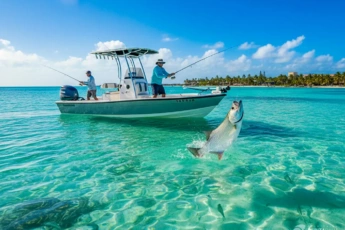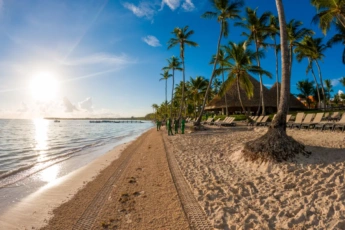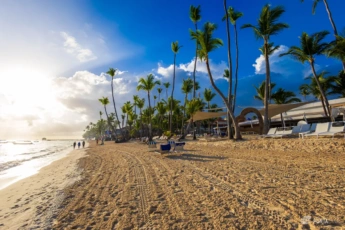The Dominican Republic - Tips & Tricks to Know Before Vacation
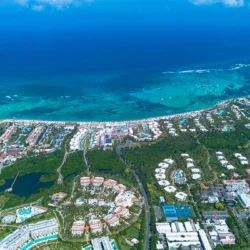
Dominican Republic in January 2025 – Weather, Best Places to Stay & Top Activities
The Dominican Republic in January is the perfect choice for those looking to escape the winter cold and immerse themselves in the atmosphere of a tropical paradise. With warm sunny days, clean beaches and a rich cultural heritage, the…
Read more
Top All-Inclusive Caribbean Villas With a Private Chef in the DR 2025 – How to Choose & Where to Find
The Caribbean is synonymous with luxury, stunning beaches, and special getaways. Among the top choices for travelers seeking an immersive and personalized vacation experience are private villas with a dedicated chef. They transform an ordinary holiday into a culinary…
Read more
Black Friday in the Dominican Republic 2025 – Rare High-Season Discounts You Don’t Want to Miss
Black Friday has become a global phenomenon, allowing shoppers to grab incredible deals on everything from electronics to travel. And now, even vacationers to the Dominican Republic can take advantage of this annual event. While Black Friday sales on…
Read more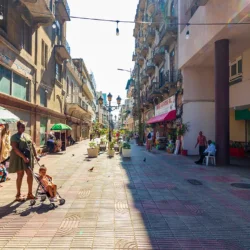
Top 15 Places to Visit in Santo Domingo in 2025 – From Colonial Charm to Caribbean Vibes
Santo Domingo is not only the capital of the Dominican Republic but also a treasure trove of history, culture, and natural beauty. This is why we have prepared 15 of the most interesting places to visit in Santo Domingo…
Read more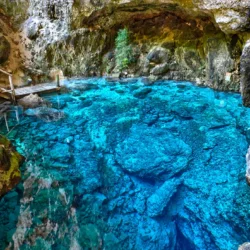
Top 12 Vacation Spots in the Dominican Republic – What You Must See & Visit in 2024
The Dominican Republic offers stunning beaches, vacation spots, delicious food, and many all-inclusive resorts. While it's tempting to relax by the pool, exploring beyond your hotel is highly recommended. Visit major cities like Santo Domingo and Santiago to experience…
Read more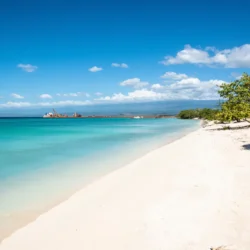
33 Best Beaches in the Dominican Republic – Hidden Gems & Popular Spots for Any Kind of Beach Lovers in 2025
The Dominican Republic is a country that is simply replete with the best beaches not only in the Caribbean, but throughout the world. Along the 800-mile coastline, there are recreation areas for travelers of all categories: families with children,…
Read more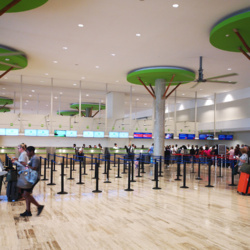
Top 7 Dominican Republic Airports – All You Need to Know in 2025: Best Facilities, Transfers, Prices, Hotspots, Pros & Cons
The Dominican Republic has seven international airports, each with its unique features. Whether you want to relax on the famous beaches of Punta Cana, explore the historic city of Santo Domingo, or enjoy the peaceful beauty of Samaná, there's…
Read more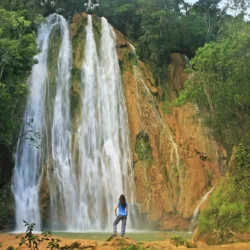
Most Beautiful Waterfalls in the Dominican Republic that You Should See in 2025 – A Complete Guide
The Dominican Republic's waterfalls are renowned worldwide for their stunning beauty and the unique ecosystems they're part of. These waterfalls are more than just a sight; they're a must-visit for anyone who loves exploring and experiencing new, exciting things.…
Read more
Health Insurance in the Dominican Republic – Costs and the Best Healthcare Options
In this article we will provide you an information and guidance on the different types of medical insurance options and the factors you should consider when choosing a medical insurance plan before your trip to the Dominican Republic. It…
Read more
What are the prices in the Dominican
Republic in 2025?
As a traveler, you may wonder what expenses you can expect when visiting the Dominican Republic. Will it be a budget-friendly destination or a costly one? The answer lies somewhere in between, as prices in the Dominican Republic can be…
Read more
Current Time in Punta Cana and 8 Tips to Adjust to a New Time Zone
The Dominican Republic is one hour ahead of the East Coast and four hours ahead of the West Coast. The current time in Punta Cana, which is a city of the mentioned country, corresponds to Eastern Caribbean Time: UTC-4…
Read more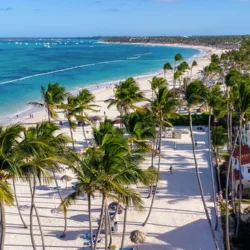
The Dominican Republic vs Dominica – Differences, Facts & Where to Stay in 2025
Confused as to which is correct: the Dominican Republic vs Dominica? Beware, it's not the same place! They are two countries in the Caribbean and completely different. Dominica is a tiny island with 74,000 inhabitants, while the Dominican Republic,…
Read moreTravel to the Dominican Republic – Tips & Tricks to Know Before Vacation in 2025
Discover everything you need to know for an unforgettable travel to the Dominican Republic, from pristine beaches to vibrant culture, luxurious accommodations, and exciting excursions. Plan your dream trip today!
Why choose the Dominican Republic for your next vacation?
The Dominican Republic offers a perfect blend of natural beauty, rich history, and vibrant entertainment. With its picturesque beaches, luxurious resorts, and cultural treasures, it's no wonder this Caribbean gem is a top destination for travelers worldwide.
- Stunning beaches. From Punta Cana’s Bávaro Beach to Playa Rincón in Samaná, enjoy crystal-clear waters and golden sands.
- Rich history. Visit Santo Domingo, the oldest European settlement in the Americas, for a journey through time.
- Diverse activities. Experience snorkeling, hiking, whale watching, and lively carnivals.
- Year-round sunshine. Perfect weather makes it an ideal escape any time of year.
Safety tips for travelers in the DR
Your safety is a top priority when traveling to the Dominican Republic. While it’s a friendly and welcoming destination, taking precautions ensures a worry-free trip.
- Health insurance. Always travel with comprehensive health coverage.
- Mosquito protection. Use repellent to avoid bites and potential diseases like dengue or Zika.
- Secure belongings. Keep valuables in a hotel safe and avoid displaying expensive items in public.
- Stay informed. Research local areas and follow travel advisories.
Travel to the Dominican Republic is generally safe, but precautions ensure a worry-free experience. Use reputable transportation, secure valuables, and stay informed about local areas. By following these tips, you can enjoy this Caribbean paradise's vibrant culture, stunning landscapes, and warm hospitality with peace of mind.
Top places to stay in the Dominican Republic
Whether you’re seeking beachfront villas, luxurious resorts, or cozy apartments, the Dominican Republic has something for every traveler. Explore top accommodations in Punta Cana, Casa de Campo, and Cap Cana.
Popular areas to stay in the Dominican Republic
| Location | Features | Ideal for |
|---|---|---|
| Punta Cana | Beachfront villas, nightlife, family-friendly resorts | Families, couples, and groups |
| Casa de Campo | Luxury estates, golf courses, marina | Golfers, luxury travelers |
| Cap Cana | Exclusive resorts, serene beaches, yachting | Couples, luxury seekers |
The Dominican Republic offers a range of stunning accommodations, from beachfront villas in Punta Cana to luxurious estates in Casa de Campo and serene retreats in Cap Cana. Each destination provides unique experiences, world-class amenities, and exceptional comfort, ensuring a memorable Caribbean getaway.
What to do in the Dominican Republic
The Dominican Republic is a tropical paradise with activities to suit the interests of anyone who wants to travel to this Caribbean country. Whether you’re seeking adventure, relaxation, or cultural immersion, this Caribbean gem has something for everyone.
1. Explore pristine beaches
With its endless coastline, the Dominican Republic boasts some of the most stunning beaches in the world. Visit Bávaro Beach in Punta Cana for white sand and turquoise waters or Playa Rincón in Samaná for a secluded escape. Water sports enthusiasts can enjoy surfing in Cabarete or kiteboarding along the northern coast.
2. Embark on adventurous excursions
Adrenaline seekers will find plenty to do, from buggy tours through lush jungles to zip-lining across dense canopies. Hike to the breathtaking El Limón Waterfall or go canyoning in the rugged terrains of Jarabacoa. Whale watching in Samaná Bay during the migration season is a bucket-list experience.
3. Immerse yourself in local culture
The Dominican Republic has a very rich culture that shines through its music, food, and festivals, and all the people who travel here should experience these things. Attend a lively merengue or bachata dance event, or savor local dishes like mofongo and sancocho at a traditional eatery. Explore historic sites in Santo Domingo, such as the Zona Colonial, a UNESCO World Heritage Site.
4. Experience marine adventures
Snorkeling and scuba diving in the crystal-clear waters offer a glimpse into the vibrant marine life, from coral reefs to tropical fish. Charter a yacht for a luxurious sail around Saona or Catalina Island.
5. Discover local markets and handicrafts
Shop for handmade crafts, amber jewelry, and larimar stones at bustling local markets. These souvenirs reflect the unique heritage of the Dominican people.
Highlights of activities in the Dominican Republic
| Activity | Location | Best time to visit |
|---|---|---|
| Beach relaxation | Bávaro, Playa Rincón | Year-round |
| Whale watching | Samaná Bay | January to March |
| Water sports | Cabarete, Punta Cana | Year-round |
| Hiking & canyoning | Jarabacoa | November to April |
| Snorkeling & diving | Saona Island, Catalina Island | Year-round |
From sun-soaked beaches to thrilling adventures and cultural gems, the Dominican Republic offers endless opportunities for a memorable travel.
Weather in the Dominican Republic
The Dominican Republic enjoys tropical weather year-round, making it a perfect destination for sunseekers. Best time to visit:
- December to April is a peak season with pleasant weather and lively festivals.
- May to November is an off-peak with fewer crowds and occasional rain showers.
| Month | Temperature (°C) | Rainfall (mm) | Activities |
|---|---|---|---|
| January | 27°C | 60 mm | Beach, snorkeling, cultural festivals |
| July | 31°C | 85 mm | Water sports, hiking |
| October | 29°C | 100 mm | Whale-watching, nature tours |
Key takeaways
Whether it’s your first visit or a return trip, the Dominican Republic offers endless possibilities. Research safety and health tips for a seamless trip; choose accommodations that match your preferences and group size; explore local traditions and enjoy diverse activities; plan your visit based on weather and seasonal highlights.
Frequently asked questions about
travel to the Dominican Republic
1. Is it safe to travel to the Dominican Republic now?
Yes, the Dominican Republic is generally safe for travelers, especially in popular tourist areas like Punta Cana, Cap Cana, and Casa de Campo.
- Resorts and well-known tourist spots have strong security measures in place, ensuring a safe experience for visitors.
- Petty theft, such as pickpocketing, can occur in crowded areas, so stay vigilant with your belongings.
- Stay updated on current health guidelines. As of recent, no major health risks have been reported.
- Drink only bottled water and avoid ice made from tap water.
- Check for updates during hurricane season (June–November) to avoid disruptions.
Use reputable tour operators for excursions and avoid walking alone in unfamiliar or remote areas at night.
2. What is required to travel to the Dominican Republic?
Here’s what you need to travel to the Dominican Republic:
List of documents needed to travel to the DR
| Requirement | Details |
|---|---|
| Passport | Valid for the duration of your stay. Six months of validity is recommended. |
| Tourist Card | Required for most travelers, often included in your airfare. Costs $10 if purchased separately. |
| Visa | Not required for stays under 30 days for citizens of the USA, Canada, UK, and most EU countries. |
| Health Insurance | Recommended but not mandatory. Many resorts require proof of travel insurance. |
| e-Ticket | Travelers must complete an e-Ticket form online before entering and exiting the country. This combines migration, customs, and health declarations. |
Please, confirm specific entry requirements with the Dominican embassy in your country, because they can vary from country to country and also change in time.
3. What to know before travelling to the Dominican Republic?
There are 6 main thing we consider the most important to know for everyone before traveling to the Dominican Republic:
- The local currency is the Dominican Peso (DOP), but US dollars are widely accepted in tourist areas.
- Spanish is the official language, though English is commonly spoken in resorts and tourist zones.
- Tipping is customary (10–15%), but many restaurants already include a service charge.
- Standard voltage is 110V, the same as in North America.
- Taxis and private transfers are common, but ridesharing apps like Uber are limited in areas like Punta Cana.
- Dress modestly when visiting churches or rural areas. Greet people with a smile and say “Hola” or “Buenas.”
Bring mosquito repellent, sunscreen, and reusable water bottles to stay eco-friendly.
4. How do I get to the Dominican Republic?
The Dominican Republic is accessible by air and sea.
By air:
- In the Dominican Republic, there are 7 airports, but the major are 3 – Punta Cana International Airport (PUJ), Las Américas International Airport (SDQ), Gregorio Luperón International Airport (POP).
- Direct flights are available from the USA, Canada, Europe, and Latin America.
By sea:
- Cruise ships dock at ports like Amber Cove in Puerto Plata or La Romana Port.
Book flights during low season (May–November) for better deals.
5. What is the risk in the Dominican Republic?
While the Dominican Republic is a popular and generally safe destination, there are some risks to consider:
List of possible risks in the DR
| Risk type | Details |
|---|---|
| Health risks | Mosquito-borne diseases like dengue are rare but possible. Use repellent and wear protective clothing. |
| Weather | Hurricane season runs from June to November, with September and October being the peak months. |
| Crime | Petty theft can occur, especially in busy urban areas. Keep valuables secure and avoid displaying wealth. |
| Road safety | Traffic can be chaotic, and roads outside tourist areas may lack proper signage or lighting. |
Stay informed by checking travel advisories and updates from reliable sources before your trip.
6. Do I need malaria pills for the Dominican Republic?
Most travelers do not need malaria pills when visiting popular tourist areas like Punta Cana, Santo Domingo, or Cap Cana. However, there are some considerations:
Malaria risk:
- The risk of malaria is low in most tourist destinations but higher in rural areas near the border with Haiti.
- If you plan to visit remote areas, consult a healthcare provider about taking malaria prophylaxis.
Preventive measures:
- Use insect repellents with DEET or Picaridin.
- Sleep under mosquito nets or in air-conditioned rooms.
- Wear long-sleeved clothing in the evening.
Focus on preventing mosquito bites rather than taking medication unless traveling to high-risk zones.
7. What can you not bring into the Dominican Republic?
Here are things you are not allowed to bring with you to the Dominican Republic:
List of prohibited items to bring to the DR
| Prohibited items | Details |
|---|---|
| Drugs and narcotics | Illegal substances are strictly prohibited and carry severe penalties. |
| Firearms and ammunition | Only permitted with prior authorization from Dominican authorities. |
| Fresh produce | Fruits, vegetables, seeds, and plants are restricted to protect local agriculture. |
| Meat and dairy products | Certain items may require inspection and documentation. |
| Large cash amounts | Declare amounts over $10,000 USD to customs to avoid penalties. |
| Drones | Drones may require prior approval or could be confiscated without the proper documentation. |
Check with Dominican customs for the most up-to-date import regulations before traveling.
8. How safe is Santo Domingo for tourists?
Santo Domingo, the capital of the Dominican Republic, is generally safe for tourists, especially in areas frequented by visitors.
- Zona Colonial is the historic district, filled with colonial architecture and tourist-friendly spots, is heavily patrolled and safe for walking during the day.
- Malecón is a scenic waterfront area popular with tourists.
Among precautions, we can list the next things:
- Avoid walking alone at night, especially in less touristy areas.
- Be cautious of pickpocketing in crowded markets or public transport.
- Use licensed taxis or rideshare services for transportation.
- Keep valuables hidden and secure.
- Stick to well-lit and busy streets.
- Avoid displaying expensive jewelry or electronics.
By following basic safety measures, Santo Domingo as any other place can be a rewarding and enjoyable destination.
9. Do they speak English in the Dominican Republic?
The official language of the Dominican Republic is Spanish, but English is widely spoken in tourist areas.
- Most resort staff, tour operators, and shopkeepers in Punta Cana, Cap Cana, and Santo Domingo speak English.
- Outside tourist areas Spanish proficiency decreases, so learning basic phrases can be helpful.
- Useful phrases include: “Hello – Hola”, “Thank you – Gracias”, “How much does it cost? – ¿Cuánto cuesta?”, “I don’t speak Spanish. – No hablo español”.
Download a translation app or carry a phrasebook for smoother communication outside tourist zones.
10. What vaccines are needed for the Dominican Republic?
Here is a list of possible vaccines you may need to travel to the Dominican Republic:
List of vaccines to consider before traveling to the DR
| Vaccine | Recommended for travelers |
|---|---|
| Routine vaccines | Ensure you are up-to-date on vaccines like measles, mumps, rubella (MMR), polio, and tetanus. |
| Hepatitis A | Recommended due to the risk of contaminated food and water. |
| Typhoid | Advised for travelers eating or drinking outside high-end resorts. |
| Hepatitis B | Recommended for those engaging in activities that could expose them to bodily fluids (e.g., medical care). |
| Rabies | Suggested for travelers spending a lot of time outdoors or around animals, especially in rural areas. |
| COVID-19 | Ensure full vaccination and booster shots as per current health guidelines. |
11. Can you brush your teeth with tap water in the Dominican Republic?
It is not recommended to use tap water for brushing your teeth in the Dominican Republic. It is not treated to the same standards as in many countries, and it may contain bacteria or contaminants that can cause stomach upset or illness.
We strongly recommend using bottled or filtered water for brushing your teeth. Also avoid swallowing tap water when showering or rinsing.
12. What documents do I need to travel to the Dominican Republic?
To travel to the Dominican Republic, you will need a number of documents, which may vary from country to country. Typically, you will need the following documents:
List of documents to prepare for a vacation to the DR
| Document | Details |
|---|---|
| Passport | A valid passport is required for entry. It’s best to have at least six months of validity remaining. |
| Tourist card | Most travelers need a tourist card, which is often included in your airfare. If not, it costs $10 USD. |
| e-Ticket form | Mandatory for all travelers. Complete it online before entering and exiting the country. |
| Visa (if applicable) | Citizens from most countries (e.g., USA, Canada, EU) do not require a visa for stays of up to 30 days. |
| Return / onward ticket | Proof of return or onward travel may be requested upon entry. |
| Health insurance | While not mandatory, it is highly recommended to have travel insurance covering health emergencies. |
Check with your airline and the Dominican Republic’s embassy for any recent updates to entry requirements.
13. How do tourists get around the Dominican Republic?
To get around in the Dominican Republic, you can use the next variants:
Transportation options to get around in the Dominican Republic
| Mode of transportation | Details |
|---|---|
| Private transfers | Commonly arranged by resorts or tour operators. Reliable and convenient for airport-to-hotel travel. |
| Rental cars | Ideal for exploring areas like Punta Cana or La Romana independently. Roads can be challenging, so drive cautiously. |
| Taxis | Widely available but can be expensive. Always agree on a price beforehand, as meters are uncommon. |
| Uber | Available in major cities like Santo Domingo and Santiago but not reliable in smaller areas. |
| Public transport (guaguas) | Affordable but not recommended for tourists unfamiliar with the area. These minibuses are crowded and lack set schedules. |
| Motoconchos (motorbike taxis) | Cheap and fast but risky. Helmets are rarely provided. |
| Tour buses | Popular for excursions and day trips, offering convenience and safety. |
For safety and comfort, opt for private transfers or organized tours when traveling between cities or tourist destinations.
14. Are mosquitoes bad in the Dominican Republic?
Mosquitoes can be an issue, especially during the rainy season (May–October), but they are manageable with precautions.
- Mosquitoes can carry diseases like dengue or chikungunya, though cases are rare in tourist areas.
- Please, use insect repellents with DEET or Picaridin. Wear light-colored, long-sleeved clothing in the evenings. Stay in accommodations with ACs or mosquito nets.
- Mosquitoes are most active at dawn and dusk.
Bring a travel-sized mosquito repellent, as local options may not meet your preferred standards.
15. What should I be careful of in the Dominican Republic?
The Dominican Republic, like almost any country, is safe if you follow a number of rules:
List of precautions in the Dominican Republic
| Aspect | Details |
|---|---|
| Safety in urban areas | Avoid displaying valuables, especially in crowded or unfamiliar areas. Stick to tourist zones. |
| Beach safety | Watch for strong currents and riptides. Swim only in designated safe areas. |
| Road conditions | Roads can be poorly maintained, with unpredictable traffic patterns. Avoid driving at night. |
| Food and water | Avoid tap water and eat at reputable restaurants to minimize the risk of foodborne illnesses. |
| Scams | Be cautious of overly friendly strangers offering unsolicited help, as it could lead to scams. |
| Hurricane season | June to November can bring hurricanes. Monitor weather updates during this period. |
| Local laws | Drug possession and trafficking carry severe penalties. Respect local laws and customs. |
Stay informed about your surroundings, use common sense, and follow advice from your hotel or tour guides for a safe and enjoyable trip.
16. How do you say hello in the Dominican Republic?
In the Dominican Republic, people greet each other primarily in Spanish, the official language.
Common greetings:
- Hola – a simple and universal way to say “hello.”
- Buenas – a casual greeting used throughout the day, meaning “Good morning,” “Good afternoon,” or “Good evening,” depending on the context.
Friendly expressions:
- ¿Cómo estás? (How are you?)
- ¡Qué lo qué! (What’s up?) – a Dominican slang term often used among friends.
Dominicans are friendly and appreciate when visitors make an effort to greet them in Spanish.
17. What is the most visited part of the Dominican Republic?
The Punta Cana region is the most visited area in the Dominican Republic.
Why Punta Cana?
- Known for its pristine white sand beaches and turquoise waters, Punta Cana attracts millions of tourists annually.
- It is home to many all-inclusive resorts offering luxurious amenities.
- Popular for water sports, excursions to Saona Island, and vibrant nightlife.
Other popular areas:
- Santo Domingo and its historic Zona Colonial draws history buffs and cultural enthusiasts.
- La Romana and Casa de Campo are famous for high-end villas, golf courses, and the Altos de Chavón.
- Puerto Plata is famous for its beaches and mountain landscapes.
While Punta Cana is the top choice, exploring lesser-visited spots like Samaná or Jarabacoa can offer unique experiences.
18. Can I travel to the Dominican Republic alone?
Yes, traveling alone to the Dominican Republic is generally safe and manageable for solo travelers.
Pros of solo travel:
- All-inclusive resorts offer secure environments with plenty of activities.
- Join group tours and excursions to make new friends while exploring.
- Dominicans are welcoming and often eager to help.
Tips for safety:
- Avoid walking alone at night, especially in unfamiliar areas.
- Use reputable transportation services like licensed taxis or hotel-arranged transfers.
- Keep your belongings secure and avoid flashing valuables.
- Stay informed about local safety advisories.
Solo travel in popular areas like Punta Cana or Santo Domingo is straightforward, but exercise caution and stick to well-known tourist spots.
19. Is the Dominican Republic a third world country?
The term “third world country” is outdated and misleading. Instead, the Dominican Republic is classified as a developing country based on its economic and social indicators.
- The Dominican Republic has seen significant economic growth, particularly in tourism, agriculture, and manufacturing.
- It remains a middle-income country with disparities in wealth distribution.
- Tourist zones like Punta Cana, Cap Cana, and Santo Domingo offer high-quality facilities and infrastructure.
- Rural areas may lack the same level of development.
While the country has its challenges, its rapid development and thriving tourism industry make it a welcoming and modern destination.
20. Who can enter the Dominican Republic without visa?
Citizens of many countries can enter the Dominican Republic without a visa for tourism purposes.
- USA, Canada, and EU citizens don’t need visa for stays of up to 30 days.
- Many Latin American and Caribbean nations also have visa-free agreements.
- Instead of a visa, most travelers need a tourist card, which is often included in the airfare or can be purchased upon arrival for $10 USD.
- Nationals of certain countries, like Haiti and some African or Asian nations, may require a visa.
Check the Dominican Republic embassy’s website for the most accurate and up-to-date visa requirements specific to your country.

